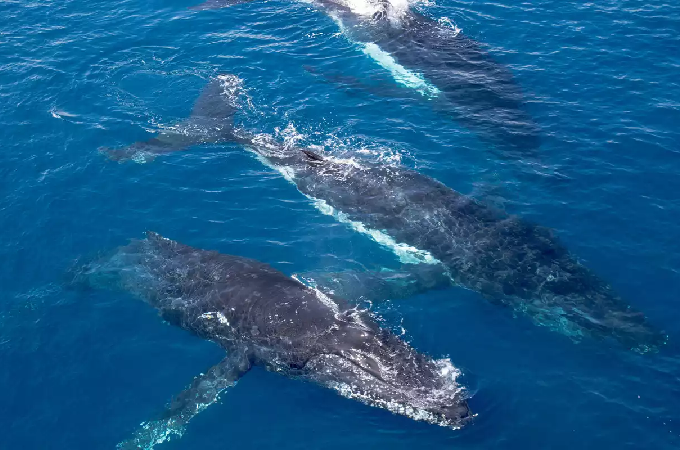3 most popular festivals in Dominican Republic
The Dominican Republic is a beautiful island country located on the island of Hispaniola in the Caribbean region. It is a much-visited tourist destination because of its tropical climate, white sand beaches, diverse mountainous landscape and also its diverse culture. It is also famous for its grand festivals which are rich in cultural activities. The best way to get into the culture of the nation is by participating in, or visiting the area during the festive seasons.
Festivals of the Dominican Republic provide a golden opportunity to explore the country along with getting to know the culture of the people. The festive events lure visitors each year from the globe. There are many other events which are also held in the Dominican Republic. So, one must check out on the Internet before making plans. There are a vast number of events taking place during the festival season, which attracts the tourist. The 3 most popular festivals of the Dominican Republic are:

Carnival of Dominican Republic (February)
The carnival is one of the greatest celebrations of the Dominican Republic. It takes place every year in the month of February. It is sometimes celebrated during the holy week in March. The Dominican Republic day is the most festive time for the Dominicans. The carnival is held in Santo Domingo. The carnival lures thousands of visitors across the globe. The celebration includes a large military display by the Dominican air force, army and navy. The Carnival is held at every town with some different style of celebration. People usually wear different costumes which symbolise Dominican religious and traditional characters.
This land was a hub for the slave trade. Many slave owners resided in this area. The Christian slave owners would let their slave have a celebration once in a year, so that they could get out of the system for once. It was considered as a Pagan celebration by the slave owners, so they mixed Christian tradition into it and they also started to celebrate this event. The carnival has been celebrated in the Dominican Republic since 1510, as discovered from the ruins of La Vega Vieja. The people of the residents used to dress as Christians and Moors for the celebration. The carnival has become a major celebration in the colony by 1700s. it was also an opportunity to get relief from religious traditions. After getting Independence from Haiti the celebration gains more popularity as the Independence Day celebration was incorporated in the festival.
The major characters of the carnival are:
- El Diablo Cojuelo:
El Diablo Cojuelo or limping devil is the main character of the carnival. According to the Dominicans folk story the devil was banished on the earth because of his childish pranks. In anger, he hits the earth with his legs and gets hurt causing him to limp. The limping devil usually wears colourful cloaked suit stuffed with small mirrors, ribbons, rattles, and cowbells. A maskcovered his face which has large horns.
- Roba La Gallina:
Roba La Gallinais also known as the hen robber is a man who is usually dressed as a woman who steals a chicken. She parades in the street carrying a large purse with candy for the crowd.
- Los Lechones:
Los Lechones are the forms of limping devil and the main carnival characters of Santiago. They wear the mask of a pig who has a long snout and tall horns. Their work is to maintain order during the festival.
- Los Taimáscaros:
Los Taimáscaros is the man carnival characters of Puerto Plata. They are also a version of El Diablo Cojuelo or limping devil. They wear a mask representing Taino gods, coats and blouses representing Spanish heritage and handkerchief symbolising African deities.
- La Ciguapa:
La Ciguapa is a female character of the carnival who comes out during the night. She is usually naked with long hairs and backward feet.
- Los Indios:
Los Indios or the Indians are the groups of men and women who wear typical native Taino Indian attire.

Semana Santa (April)
Easteror Semana Santa is one of the most celebrated religious holidaysof the Dominican Republic. It is also a bigger festival than Christmas for the Dominicans, and is more splendidly celebrated. The reason is that Jesus Christ sacrificed his life for the people, crucified on a cross and then resurrect on the auspicious day of Easter. The resurrection of Jesus Christ is the reason for the celebration. The Easter Sunday reminds of the pain and sufferings Jesus Christ has gone through on his last two days on Earth. Semana Santa will be celebrated on April 5th to 11th 2020.
The Dominican Republic is a Catholic Country and about 85% of the total population is Catholic. People prefer to gohome during the weekend to celebrate with their family. In Cabarete, during the festive, the beaches are filled with people from all over the country. People usually take time off from work during the holy week. Daily activities, like the running of motorised boats etc.are banned during the festive time. Good Friday is an important day for prayer service as it specifies the day on which Jesus was crucified and died on the cross. On this day a sort of Sabbath or religious observanceare observed, shops and offices are closed. People spend this day in the church with their family. Pubs and clubs are usually closed during that night, because of noise restriction policies. Only classical and traditional music is played on Good Friday in Cabarete. As midnight marks the start of Saturday the party birdsroar in the street. You can seehuge crowds of party lover in the Cabarete beach clubs enjoying live music and DJs.There is an increase in police, military and emergency service volunteers for the convenience of the people on the streets in major cities and towns. The main motive behind this is that the festive run smoothly.
The parades and processions throughout the city during Easter are quite spectacular and visitors should never miss a chance to see it. Santo Domingo has especially amazing processions in all the nation. There are many prayer services throughout the holy week, to commemorate Domingo de Ramos or the Palm Sunday, Miercoles de Cenizaor the Ash Wednesday, Jueves Santo or the Holy Thursday or the day of the Last Supper, Viernes Santo or the Good Friday, Sabado Santo or the Holy Saturday, Domingo de Resurrection o de Pascua or the Easter Sunday. Special food is made for this occasion in large amount for family and visitors. Seafood and fish are the main courses for the people, as meatabstains for the holy week. Habichuelas con Dulce, a spiced, cold, sweet bean pudding prepared from condensed milk is a classic feature. Visitors are advised to be respectful for this religious observance.

Guloya Festival (January)
Guloya festival is an important cultural event of the Dominican Republic. It is celebrated every year in the month of January in San Pedro de Macorís. The city of San Pedro was founded by the Cuban immigrants who fled away from their country’s war of Independence in the 19th century. The Cuban has extensive knowledge of sugarcane farming which led San Pedro to become an economically important port city of the country.
The Guloya festival is celebrated by the Afro-Dominican people who dressed in vibrant costumes which resembles Junkanoo and dance through the streets, to the music produced by flutes and drums. San Pedro has lost its former significance but a huge crowd gathered to see the raucous drummer’s procession through the Miramar neighbourhood and to get a taste of the culture of the country. The Guloya Dance is recognised as a Masterpiece of the Oral and Intangible Patrimony of Humanity by UNESCO.
According to the historians, the term “Guloya” comes from Goliath which is a biblical story of David and Goliath. The people usually wear colourful costumes where red, blue, green, yellow and orange colour dresses predominate. Clothes are adorned with small mirrors, coloured ribbons, a cape and a long hat made with feathers. Dominicans embraced the traditions of Guloya which results in the rise of a new bloodline i.e., Cocolos. The new bloodlines learn to speak both languages i.e, Spanish and English. Both the English and the Dominican culture merged into a richer culture than it was earlier. Thus, the Guloya festival is celebrated to mark the merging of both the culture.
If you want to hop on the next flight to the Dominican Republic, make sure to check out the German website from Backpackertrail first, there you can find lots of information, on what to know before you travel to this country.

List of other festivals
- January:
Santo Cristo de Bayaguana (January 1), Three Kings’ Day (January 5-6), Virgen de Altagracia (January 21), Duarte Day (January 26)
- February:
Virgen de Candelaria (February 2), Independence Day (February 27)
- March:
de Marzo (March 19)
- May:
Santa Cruz (May 2 – 3), San Felipe (May 3), Espíritu Santo (May 3)
- June:
San Antonio (June 3), San Juan Bautista (June 17 – 24), San Pedro Apóstol (June 29)
- July:
Santiago Apóstol (July 24 – 26)
- August:
Festival of the Bulls (August 14), Restoration Day (August 16)
- September:
Virgen de la Merced (September 24), San Miguel (September 29)
- October:
Santa Teresa de Ávila (October 14 -15), Merengue Festival (Third week of October), San Rafael (October 24)
- November:
Todo Los Santos (November 1)
- December:
Santa Bárbara (December 4), Festival of the Bulls (December 28)
- https://en.wikipedia.org/wiki/Carnival_in_the_Dominican_Republic





